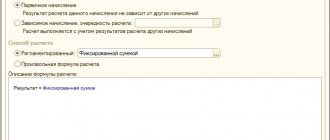Downloads: 238
1. General provisions on the social package.
1.1. The social package (hereinafter referred to as the Program) was developed to develop the social and humanitarian aspects of the company’s corporate strategy in order to motivate employees to work effectively to achieve the individual and general goals of the company.
The company's social strategy is aimed at cultivating a new mentality, promoting the humanization of society, and creating for employees all conditions that motivate self-realization and self-development.
1.2. This provision on the social package regulates the types and procedure for providing company employees with additional social benefits not provided for by Labor legislation.
Loan.
2.1. A loan is one of the benefits provided to company employees for conscientious work. Providing a loan is a form of reward for successful employees of the company.
2.2. Reasons for granting a loan:
— expenses for paying for your own education or for paying for your children’s education;
— purchase of expensive goods (car, furniture, household appliances, etc.);
— marriage of an employee or his children;
— purchase or exchange (repair) of housing.
— extraordinary circumstances, such as: causing major material damage to an employee as a result of a natural disaster or theft;
— accident or illness of an employee (or his immediate relative);
2.3. Types of loans provided by a company to an employee:
- short-term
- average
- large
2.4. The decision to issue loans is made by the Loan Commission.
2.5. The size and procedure for granting and repaying loans are established in the “Regulations on the provision of loans to company employees.”
2.6. The monthly limit on providing loans to company employees in 2004 will be 300,000 rubles.
General provisions
1.1. This Regulation regulates the procedure for establishing and paying incentives and compensation payments (allowances, bonuses and others) to the salaries of employees of [name of budgetary institution] (hereinafter referred to as the Institution), determined by the staffing table of the Institution.
1.2. This Regulation has been developed taking into account Art. 135 of the Labor Code of the Russian Federation.
1.3. This Regulation is adopted with the aim of strengthening the material interest of the Institution’s employees in improving the quality of the tasks performed, timely, conscientious and proactive performance of official duties, increasing the level of responsibility for the assigned area of work, as well as when performing tasks of particular importance and complexity.
1.4. The following are defined as specific indicators for assessing the performance of employees of the Institution, for the implementation of which incentives and compensation payments are established and paid:
— successful and conscientious performance of their official duties;
— performing tasks of particular importance and complexity;
— reasonable initiative, creativity and application of modern forms and methods of labor organization in work;
— performing work of high intensity and intensity (large volume, performing urgent work that requires increased attention);
- special work mode - work in conditions different from normal: urgency and increased quality of work, knowledge and use of computer and other equipment, special mode and work schedule (systematic overtime beyond the normal working hours, duty on weekends and holidays).
back to contents
Material aid.
3.1. Financial assistance is the provision by the company of a one-time cash benefit to an employee in the cases provided for by this Program.
3.2. Types of financial assistance provided to company employees:
Grounds for receiving financial assistance Amount of financial assistance Category of employees Required documents Birth of a child RUB 2,000.
3000 rub. For employees on probation;
For other employees Application, copy of the child’s birth certificate Death of a close relative RUB 2,000.
3000 rub. For employees on probation;
For other employees Application, copy of death certificate Death of an employee working in the company In the amount of 2 months' salary. boards +
10,000 rub. Relatives of a deceased employee Statement from the head of the service, copy of the death certificate, documents confirming family relationships 3.3. Financial assistance is provided based on the employee’s application, supported by the necessary documents and the resolution of the Head of the unit.
3.4. The decision to provide financial assistance is made by the Head of the Administrative Service in accordance with this Program.
Compensation and benefits: conditions for receiving, specifics of registration and nuances
Currently, many enterprises provide compensation and benefits in addition to the established wage system. Their introduction is aimed at providing workers with material benefits that improve their quality of life.
Depending on the type of activity of the enterprise and working conditions, benefits and compensation can amount to up to half of the employee’s total income.
Next, we will consider some additional material incentives, their purpose and the feasibility of their introduction.
Types of material goods
The compensation and benefits provided to the employee help to retain him at the enterprise. They are not used to generate additional motivation, since their size does not depend on the quality and volume of work.
Certain (social) compensations and benefits are specified in the Labor Code. Among them:
- Payment for vacations and periods of temporary disability.
- Loans on preferential terms for urgent needs.
- Pension insurance.
- Compensation for harmful working conditions.
It must be said, however, that not all enterprises comply with the provisions of the law on the introduction of additional benefits for employees.
Some benefits and compensation for employees are not fixed in the Labor Code, but are prescribed in other regulations. We are talking, in particular, about:
- health insurance;
- additional pension provision;
- health/life insurance against accidents;
- financial assistance in addition to vacation pay;
- vouchers to sanatoriums, partially (or fully) paid for by the enterprise;
- payment for employee training;
- preferential prices for company products;
- additional vacations;
- providing free food;
- reimbursement of expenses for the use of personal transport to perform production tasks;
- provision of a cell phone, payment for communications, etc.
Factors determining the establishment of additional benefits
When deciding what compensation and benefits will apply in a particular organization, management needs to take into account:
- Features of legislation. Enterprises must provide their employees with payments, compensation, and benefits set forth in regulations. At the same time, local authorities can issue municipal acts introducing additional material support.
- Features of the labor market. To increase the competitiveness of an enterprise, the manager must provide not only a standard list of compensation and benefits to his employees, but also additional benefits taking into account their professions. For example, in Soviet times, all employees were provided with vouchers to sanatoriums, housing, and free food.
- Features of taxation. Skillful use of the specifics of the tax system allows you to optimize labor costs. In countries with high personal income tax rates, in order to attract highly qualified specialists, provision is made for the provision of a car, subsidized housing, etc. In the Russian Federation, quite large sums have to be transferred from earnings to extra-budgetary funds. But due to the widespread use of “gray” salary schemes, domestic enterprises are in no hurry to expand the list of compensation and benefits for staff.
- Cultural traditions. This factor must be taken into account when an enterprise plans to organize production or open a representative office in another country. If you do not take into account the peculiarities of the state’s culture, you may encounter various unpleasant situations. For example, mass absenteeism is possible during religious festivals that are not officially declared non-working days, etc.
- High-quality composition of employees. Many compensations and benefits are established depending on the gender, age, and education of employees. For example, maternity benefits are provided for women, but they are not established for men. At some enterprises, individual employees are considered especially valuable, so management is in no hurry to send them to a well-deserved retirement due to their age. Such pensioners are provided with compensation and benefits under special conditions. For example, employees are paid a salary and additionally accrued the amount that they would receive if they retired.
- Features of the organization of the enterprise’s activities (specifics of labor organization, nature of work). Benefits and compensation at individual enterprises depend on working conditions. In organizations engaged in industry, personnel are provided with free food and uniforms. The law provides for compensation and benefits for hazardous working conditions. Employees of such enterprises are provided with additional paid leave, free trips to sanatoriums, etc.
Of course, these factors influence the lists of compensation and benefits established in organizations. Despite the existing national and cultural differences, changes in the material support system have common features. Its development proceeds from the establishment of simple, standard compensation to the formation of a complex set of benefits, the introduction of which requires significant investments.
Recently, there has been a tendency to abandon centralized, standard compensation for all workers without exception. Instead, functions are redistributed between the private sector and the state.
Many enterprises have a compensation and benefits specialist position on staff.
Its tasks include analyzing the situation and developing programs to provide employees with material benefits in accordance with the nature of their activities.
In some cases, the law allows for monetary compensation of benefits. Employees can choose the form of financial support themselves. For example, additional days of rest may be replaced by a cash payment.
Working hours and rest
The first benefit provided to hired workers was a limitation on the length of the working day. It was officially established for the first time in the 17th century. in England.
Currently, in almost all states, at the legislative level, not only the length of the working day (shift), but also the number of working days in the calendar year are regulated, holidays and weekends are established. At the same time, the concept of “flexible work schedule” is enshrined in labor legislation.
It assumes that an employee must work a certain number of hours per month (or per week), and he has the right to choose his own working hours. The flexible work schedule system is popular in enterprises that employ the work of scientists, engineers, and managers. It allows employees to combine personal life and work.
The development of the “flexible schedule” concept is the “officeless work” model. In accordance with it, the concept of “work” in the sense of a room in which people from one organization gather disappears.
They do not come to the office, but complete tasks where they can. For example, sales agents work directly with clients, programmers, accountants work at home, suppliers work with suppliers, etc.
Communication between the employee and the client is carried out via email, telephone, etc.
Setting specific working hours is often used as a means of controlling labor costs. During the crisis period of the early 90s. last century, due to the transition to a market economy, managers of domestic enterprises transferred their employees to a shorter week, and some even sent staff on unpaid leave.
Along with the duration of the work shift, the minimum duration of paid leave is fixed at the legislative level. The duration of rest is determined, as a rule, by the specifics of work activity. For example, education workers are provided with long vacations throughout the summer.
Employee insurance
As a rule, enterprises operate a collective insurance system, which involves the distribution of risks between participants in labor relations and the insurance company. This system includes medical care for an employee who has suffered a work injury or occupational disease, and payments in the event of injury or death of an employee.
Previously, workers themselves created insurance unions. Later they began to include employers who wanted to bear part of the costs. Currently, the system of insurance of enterprises for their employees is a complex structure consisting of many elements.
Health insurance allows employees to receive medical care free of charge in states where the government does not guarantee such care to all entities. It is often financed by both the employer and the employee himself in a ratio of 70:30 respectively.
Health and life insurance provides the employee and his relatives with a certain income in the event of loss of the insured person's ability to work or death due to an accident at work. Payment amounts are usually set in proportion to the salary. The company finances most of the compensation, and the employee - less.
Hazardous working conditions: compensation and benefits
Domestic legislation obliges employers who employ citizens in hazardous work to compensate employees for damage caused to their health.
Harmful (dangerous) working conditions are those in which there are factors at work that negatively affect the health of workers. To identify them, production is examined and workplaces are certified.
According to current standards, the following compensations and benefits for hazardous working conditions are established:
- Additional annual leave of at least 7 days.
- Reduced working hours.
- Supplement to salary (hourly wages).
- Free examination at a medical facility.
- Early retirement.
- Organization of special (preventive) nutrition.
- Insurance against occupational diseases and accidents.
- Providing special clothing and protective equipment.
- Payment for treatment.
Features of social guarantees for workers in hazardous production
Current legislation establishes the standard length of the working week. It is equal to 40 hours. For workers in hazardous industries, the working week is reduced by 4 hours. However, the legislation allows for the involvement of personnel in overtime work with the establishment of additional payment to earnings.
For citizens working in hazardous conditions, an additional week's paid leave is provided. At his discretion, the employer may increase its duration.
Persons working in hazardous conditions should receive preventive nutrition. However, it is issued in particularly hazardous industries, for example, in facilities of class 3.1.
Employees of hazardous industries have the right to retire earlier than ordinary workers. This opportunity is provided if the position held by the citizen is included in the list of dangerous (harmful) positions.
Specifics of registration of benefits
The rules for receiving compensation and other material benefits are enshrined in the collective agreement, labor agreement, as well as in local acts of the enterprise. Additional payments, as a rule, are already included in the amount of earnings.
The basis for the provision of benefits is the time sheet of employees and the orders of the head of the organization.
Employees of enterprises classified as hazardous class 3 are provided, among other things, with a salary supplement. It is at least 4% of the salary. The head of the organization can increase this amount at his own discretion.
Documentation
Many employees are interested in what documents must be provided to the employer to receive compensation or benefits.
Since additional material support is already specified in the employment contract, it will be provided automatically. You do not need to provide any special documents for this.
If an employee wishes to replace the benefit with a cash payment (if such a possibility is provided for by law), he writes a free-form application addressed to the head of the enterprise.
Health insurance.
4.1. Medical insurance is a company's payment for additional medical services provided to an employee by medical institutions in excess of the mandatory state limit.
4.2. Additional medical insurance is provided to all company employees hired after successfully completing a probationary period.
4.3. Insured employees of the company can receive all medical services specified in the “Memo” issued to them in accordance with the agreement concluded between the company and the health insurance company.
Discount travel for employees' children.
5.1. To ensure proper rest for the children of company employees in the summer, the company provides vouchers to children's health camps at discounted prices.
5.2. All company employees with school-age children have the right to receive vouchers to a children's health camp.
5.3. The decision to provide vouchers is made by the Social Insurance Commission on the basis of an application from an employee with a resolution from the Head of the unit and the necessary documents.
5.4. The employee pays 20% of the total cost of the trip. The rest is compensated by the company and the Social Insurance Fund of the Russian Federation.
Basic rights and responsibilities of the administration
5.1. The Administration of the Organization is obliged:
– comply with labor legislation, conditions stipulated by labor and collective agreements;
– ensure social insurance of all employees and payment of social benefits provided for by the current legislation of the Russian Federation;
– organize the work of employees;
– provide workers with the necessary technical means, equipment, supplies and office equipment;
– create safe working conditions that comply with labor protection and safety regulations, sanitary standards, and fire safety regulations;
– ensure compliance with labor discipline;
– comply with the terms of remuneration stipulated in the employment contract, pay wages on time;
– assist employees in improving their qualifications and improving professional skills;
– contribute to the creation of interest in the success of the Organization’s work among the workforce;
– carry out activities aimed at increasing the efficiency of personnel, their interest in strengthening the stable position and sustainable financial activities of the Organization.
5.2. The Administration of the Organization has the right:
– require the Organization’s employees to fulfill the duties stipulated by the employment contract and job description;
– demand from the Organization’s employees compliance with labor discipline, working hours and rest, compliance with the standards established by these Regulations and other local regulations;
– to recover, in accordance with the procedure established by current legislation, from the employees of the Organization for direct actual damage caused to the Organization, for shortage, loss, misappropriation, damage to material assets. The employee bears financial liability both for direct actual damage directly caused by him to the Organization, and for damage incurred by the Organization as a result of its compensation for damage to other persons;
– demand from the employee the timely return of the technical equipment issued to him for the performance of professional duties in accordance with the terms of the employment contract, specified in paragraph 5.1 of these Regulations, belonging to the Organization and being its property.
5.3. The Administration of the Organization acts as an employer and at the same time:
– emphasizes respect for the rights, individuality and value of each employee by encouraging him to perform highly productive work in a friendly and stimulating atmosphere, striving for open and trusting relationships;
– provides all employees with equal opportunities to realize their individual abilities, ensuring objective assessment of results for quality work performed;
– is interested in high ethical standards in all aspects of production activities and the personal responsibility of each employee for the quality of the work performed;
– welcomes constructive criticism and encourages employee initiative;
– contributes to the unification of employees into an integral work team, the creation of a healthy creative and moral-psychological environment in it, ensuring a spirit of solidarity and a sense of interest of all personnel in the success of the Organization as the basis for its well-being;
– is attentive to the needs, requests and requirements of employees. Exercising its rights and obligations, the administration of the Organization strives to create a professional team, develop corporate relations among employees, their interest in the development and strengthening of the Organization’s activities, its stable position, and sustainable financial activities.








